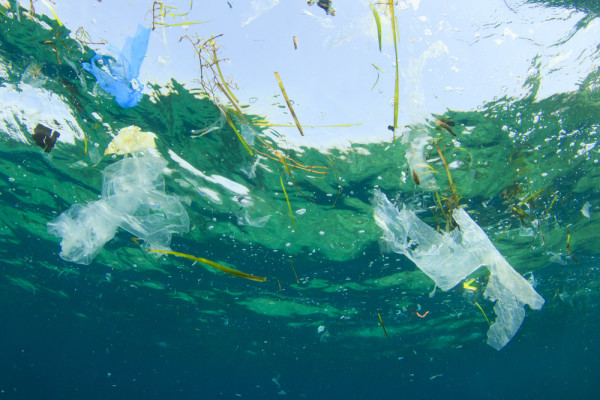
This is the first of two-part post. This installment is written by Kim, who will present alternatives to the Ocean Cleanup project to help curb the problem of plastic pollution in the oceans. The second installment is a technical review of the Ocean Cleanup feasibility study and is a collaboration between Kim and Miriam .
Last year, Deep Sea News reviewed the Ocean Cleanup project. The brain child of Boyan Slat, he claimed that his design could clean the ocean of plastic in 10 years. At the time the project was just a concept. It was a concept that we found had serious potential problems. As is explained in the technical review, we still think it has a lot of problems.
We can all agree here, we WANT to see plastic in the ocean cleaned up. But it isn’t an easy job and right now there isn’t a catch-all solution. Therefore, I’ve assembled a list of organizations that are actively trying to reduce ocean plastic, and suggestions on how you can help facilitate positive change. Because ocean plastic is a big problem that needs a big solution, and we need to work together on multiple fronts to solve it.
ORGANIZATIONS THAT ARE HELPING REDUCE OCEAN PLASTIC
5 GYRES, BEAT THE MICROBEAD, and THE NORTH SEA FOUNDATION

These organizations have waged an awesome and successful war against ocean plastic and in particular the terrible microbead. Microbeads are the little pieces of plastic that cosmetic companies put in their products for some extra scrubbiness. But once you wash your face, these microbeads go straight into waterways because they can’t be removed from wastewater*. Working together, 5 Gyres, Beat the Microbead (part of the Plastic Soup Foundation) and The North Sea Foundation has successfully convinced Unilever, The Body Shop, L’Oreal, Colgate-Palmolive, and Johnson & Johnson to all stop using microbeads in their products. These organizations are also working with lawmakers to enact microplastic bans in the US, Canada and Europe. Keep up the good work you banishers of microplastics!
You can also stop using cosmetics with plastic microbeads, but make sure you dispose of them properly.
OCEAN CONSERVANCY
Sometimes you got to use a little muscle to clean the ocean. And that’s just what the ocean conservancy does, each year they organize the International Coastal Cleanup. The next one is September 20. Volunteering is good for your soul and the beach.
SURFRIDER FOUNDATION – RISE ABOVE OCEAN PLASTICS
They surf, they shred, they care about the ocean. The Surfrider foundation is on it with their Rise above Plastics campaign, working at the local and state level to get plastic bags banned and help pass other plastic reducing initiatives.
BALTIMORE’S INNER HARBOR WATER WHEEL
Writer at Southern Fried Science and friend of Deep Sea News Andrew Thaler just alerted us to this really neat trash collecting water wheel. In development since 2008, its collecting plastic before it enters the ocean RIGHT NOW.
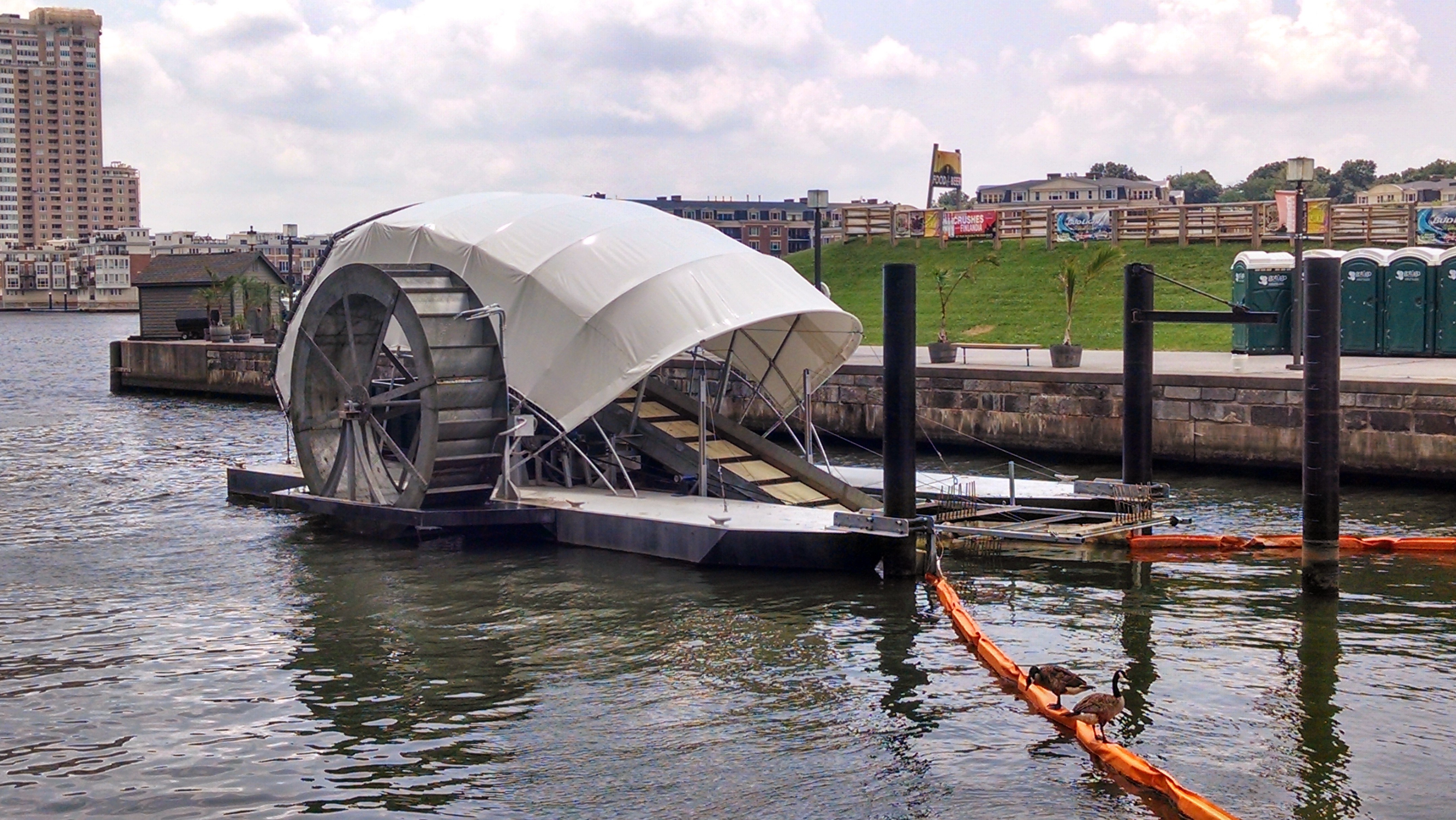
THINGS YOU CAN DO TO CURB OCEAN PLASTIC
GET INVOLVED LOCALLY
Does your town/city/state recycle? Do they have a plastic bag ban? Is there a ban on microbeads? No? Then get on it people! You can find ways to help make these plastic reducing initiatives a reality in your area and in your country. Congressman Frank Pallone has just introduced legislation to ban microbeads nationwide. But for reals, Seattle started making everyone pay 5 cents per plastic bag and I can see the change when almost everyone brings reusable bags to grocery shop!
REDUCE, REUSE, RECYCLE
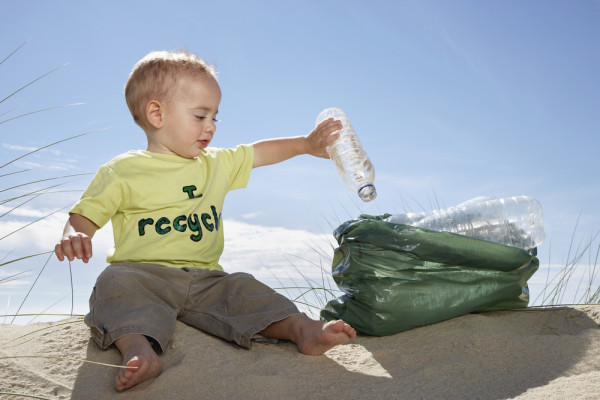
I have a confession to make to you all. I may love all my new-fangled science gadgets, but I am a big earth loving hippie at heart. I try my best to make my footprint on this earth as small as I can. And you should too.
Before you run away screaming from what you imagine to be my patchouli stink, I just want to clarify that I’m not here to tell you to go all Ed Begley Jr. tomorrow because the ocean is filled with plastic. Instead I just want you to think about making one small change. One small change that you try and abide by regularly to reduce the amount of plastic you use.
Put a reusable bag in your car so you always have a bag at the grocery store. Use tupperware instead of a plastic baggies. Buy something you really want used instead of new (and save money…SCORE!). Bring a reusable water bottle/coffee mug. Cloth diapers if you dare. Cloth wipes if you double dare. Pick up a piece of trash and put it in a waste basket. Use a razor with replaceable blades. Even better, look badass and use a straight razor. Buy laundry detergent in cardboard boxes. Switch out your plastic microbead face wash for one with a natural biodegradable exfoliant like apricot seeds. Use paper disposable plates and compostable dinnerware. Reuse a ziploc bag or get compostable ones. Throw your cigarette butt in the trash instead of the street. Hold onto that bottle until you find an appropriate recycling bin.
Once you get the hang of this one change, add another. It might take a while to make the change a habit, but stick with it. Because I seriously do believe that a little change by everyone is much more effective than one person changing everything. And we all need a little less plastic in this world.
AND FINALLY AN IDEA I LIKE…A LOT.
STORM WATER DEBRIS NETS
I’ll admit, I am particularly enamored with this idea and I REALLY want it to work. By adding nets to the outlets of storm drains, a lot of plastic can be captured before it potentially gets to the ocean (which is also why Baltimore’s water wheel is SO awesome!). But this solution also has its problems, as the nets need to be emptied and maintained. That costs manpower and money. Money many municipalities don’t have right now. I really wish they did. And even if the array doesn’t work, it would be wonderful if the plastic collection technology that results from ocean cleanup project could be adapted to filter plastics from stormwater runoff.

Have any other solutions to reduce ocean plastic? Please list them in the comments below!
*The Ocean Cleanup array can’t collect microplastics, so even if you think the plan will work, STOP USING MICROBEADS NOW.



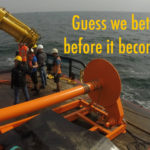
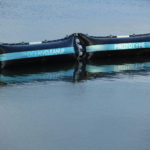
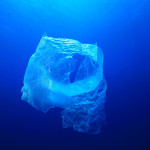
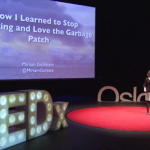
Great list.
Ocean Recovery Alliance also aims to reduce plastic waste using financial levers. We have a plastic mapping application, it also maps storm drains or catchments. They also just hosted Plasticity a conference to reduce plastic waste from a design perspective.
Great post. On the more conscious consumerism side, method’s soap bottles made with recovered ocean plastic from beaches in Hawaii and The People’s Movement’s products made from plastic bags from beaches in Bali and California are an easy way to put your money where your passion is. Not there aren’t many other great companies like these two, but two worth mentioning.
I have recycled since I actually WAS a dyed-in-the-wool hippy. Two things that don’t seem to be recyclable but should be are toothbrushes and disposable razors. Plastic bottles are often recyclable, but the caps are not. Why? With the huge knowledge base that now exists, there has to be a way to ensure that all plastic is recyclable.
Thanks I did not know about them!
These are also great options to help encourage plastic recovery.
As far as I know there is one company that does. You can recycle toothbrushes and razor handles from https://www.preserveproducts.com . But I agree, more of these types of products should be recyclable.
Also check out http://www.twohandsproject.org (and our facebook page) we inspire self motivated clean ups anywhere, anytime.. we also advocate for a global standard on reusable packaging and refund systems for common plastic pollution items
All of these mentioned solutions to plastic pollution are spot on. From reducing our use, to Two Hands Project, to the innovation of the Water Wheel and catchments. But why are we putting so much energy into proving a teenager’s idea to collect debris in the ocean is a bad idea? Since when do we tell someone not to try to do something for the greater good? I know what’s out there, I’ve been to 4 of the 5 gyres. But instead of poo-pooing his ideas, why not help him be more realistic. When I present, always, always, always, the first question is, “What are we doing about cleaning it up?” I was one of the first to come up with the bathtub analogy, “If a bathtub is overflowing, what do you do first, mop up the water or turn off the faucet?” But since we have a team of young minds wanting to try to come up with a device that can help mitigate what is out there, why should we discourage? I know one of the fears is that people will think they don’t have to worry about it if the Ocean Cleanup is out there. But let’s get real. It is helping bring awareness to this issue of marine debris as well. And if it is remotely successful, than it will be an improvement, just as beach cleanups mitigate. What we need to do is help him with the design so it doesn’t kill more marine life than what marine plastics are already doing. I feel this is our job since many of us know the risk of putting anything in the water as it also has the potential to kill or become marine debris as well. And if it fails completely, we can then answer the question, “what is being done to clean it up?” with an answer, we tried, but it just wasn’t feasible.
I encourage Boyan Slat and all efforts. The technical obstacles that he faces are huge besides the ocean depth being about 4000 m and he thinks he can anchor to it. Then what does he do with the collected waste and if it is to be transported to land then how much more carbon footprint as that adding?
We at http://dreamgreen.org/clean-oceans are building a non profit organization and presently in negotiations to acquire a 200 foot landing craft that will have an on board plastic to fuel converter that should be able to make more fuel than the entire vessel operations require. We shall also carry on board vehicles to collect waste from isolated locations and 3rd world shores where there is no funding. Our first pilot project location is the coastline of Alaska where there are few roads along the coast so there is no other way to collect the plastic debris. There are many locations where the accumulations exceed a ton/mile. The authorities there are very supportive. We hope to prove the technology within a year and provide it to countries around the world to replicate. Please support our project with a small donations or just a like of our page at: https://www.facebook.com/dreamgreen.org
Thank you
We have listed our reasons for reviewing the Ocean Cleanup feasibility study in Part 2 of this post. But really, our reasons for reviewing it ARE to discourage bad design, which has a high potential to harm marine life and add a large quantity of marine debris to the ocean. Raising over a million dollars to deploy the largest offshore structure in the history of the world is hardly a high school science fair project. We do Mr. Slat the courtesy of taking him seriously.
Hi Bonnie,
My concerns are the Ocean Cleanup array may, through the curse of unintended consequence, actually cause more harm than good.
Just a couple of potential of ways this could happen.. I am currently writing about this in detail..
-It will create the largest fish aggregation device in history, attracting a huge number of fish and seabirds to feed around it, it’s highly likely these animals, while feeding in the highly concentrated microplastic and biological plume released by the array, will recieve much higher rates of plastic ingestion and associated toxins.. over a decade this impact could be profound.
-Focusing on ocean cleanup will delay turning off the fawcet as you put it.. polluting industries will sponsor it as cheap greenwash and delay changing polluting design and practice.. sadly many consumers are already perceiving the ocean plastic problem as “solved” and are happily continuing to consume disposable plastic. Funding will be diverted from prevention/interception and funneled into the grand ocean clean up scheme.
Ocean Gyre cleanup should be the third step in the equation, and when we turn off the fawcet it may even prove unnecessary
Hi Paul et al,
I am totally in agreement with all of you. My point is this, we can either discourage or we can help make sure these things do not happen. If we work with him and his team, we can help ensure the correct conclusion is made. I strongly feel it will morph into something else. The design has changed significantly from the first. All of it has just been computer generated. We know the ocean is highly unpredictable and why there are problems with this idea. Yet, it is what people want and why he has already had over a million dollars donated to this project. Instead of being adversary, why not reach out to him to help him come up with the right conclusion, especially someone as knowledgeable as Kim Martini. Need is the mother of invention and we just might stumble on something that can help, not hurt the marine life we are trying to protect. But we do not know until we try.
What we hope is that the enthusiasm and support that has surrounded this project will be channeled into a workable solution to remove plastic from the ocean. That is why we have evaluated the idea and presented a review. Flaws were found, but in my experience being highly critical and figuring out what doesn’t work is necessary for success. A recent quote by a senior engineers at NASA encapsulates this perfectly “A good engineer is rarely an optimist.” For this project to succeed, these issues must be addressed.
one thought on the stormwater debris nets and the need for peoplepower to empty em: this would be a perfect sort of task for people doing community service as a condition of probation etc. or for groups to “adopt a net” like they do with stretches of highway
There is a chapter that discusses the expected carbon emissions from transporting the collected plastic back to the array.
I think this is a healthy discussion and here is an opportunity to field your questions and concerns directly: July 18: Interactive panel discussion on utility and feasibility of cleaning up ocean plastics: Featuring Marcus Eriksen (5 Gyres), Boyan Slat (The Ocean Cleanup), and Nick Mallos (Ocean Conservancy)
Date: Friday, July 18, 2014
Time: noon US EDT / 9 am US PDT / 4 pm GMT
Hosted by MarineDebris.Info
To join the discussion on July 18: http://bit.ly/MDI-Chat
Ditto with what Miriam said below.
And Bonnie, since you are a coauthor on the feasibility study, you should definitely take a look at our review and think about how it could improve the final product you believe in.
Hi Kim, Yes, I agree with what your study for the most part and it is a useful tool for anyone wanting to attempt what Boyan is seeking to do. Just as the report expresses concern for such an undertaking, it is precisely why I am involved. We just took two different approaches. I truly believe working with a young person whose motive is for the greater good will lead to something good. Telling him not to try because it is impossible is not how we achieved going to the moon, nor how we figure out complex problems. And most often it is through the exploration of a difficult problem that we discover something more useful than the original plan. I feel Marcus’ suggestion of “build a small prototype, put it in the ocean for a year” is sound advice. Let’s work together and help see what we can learn on a small scale. With our experiences, we understand many of the obstacles Boyan may not be aware of and why our input will prevent bad design. At the very least this project can serve as an answer from the knee jerk reaction to, “What are we doing to clean it up?” And we can honestly say, we tried.
“Adopt a net” is a great idea!
Agreed, you should definitely not tell someone not to try. But you should also tell someone when their design is flawed. You are very optimistic, but judging from the MDI interview, I don’t think Boyan is interested in taking either Marcus’s or our advice.
https://www.deepseanews.com/2014/07/the-ocean-cleanup-responds-to-our-technical-review/
I think a lot of miscommunication here is about the function of peer review. Peer review is a favor, not bullying. By providing this critique, we ARE volunteering to help the Ocean Cleanup. This is how science works. If Boyan prefers to criticize our credentials (though since we are oceanographers familiar with open ocean operations that is a pretty weak critique) instead of seriously engaging with our comments, that is his business, but it shows that he’s not getting very good advice from his science team.
One very easy and instantanous
Impact in plastic pollution is saying no to plastic straws. Sign up with Ocean Conservancy’s
“Skip th Straw” campaign, empower yourselves and other’s by declaring your “Last Plastic Straw Moment” with thelastplasticstraw.org, and make every month plastic free! plasticfreejuly.org
I taught my dog to fetch plastic bottles
New Ocean Blue is another organization that focuses on plastic pollution. Our efforts until recently have been to educate children about the effects of plastic pollution and reducing plastic use through school assemblies, community events and travelling, interactive art displays. But we would like to see more effort being put on convincing businesses to reduce their plastic packaging as well as coming up with viable, environmentally-friendly plastic alternatives. Check out our website at http://www.newoceanblue.com or our Facebook page.
Neat! Thanks for sharing. (and I think you might have meant http://newoceanblue.org/)